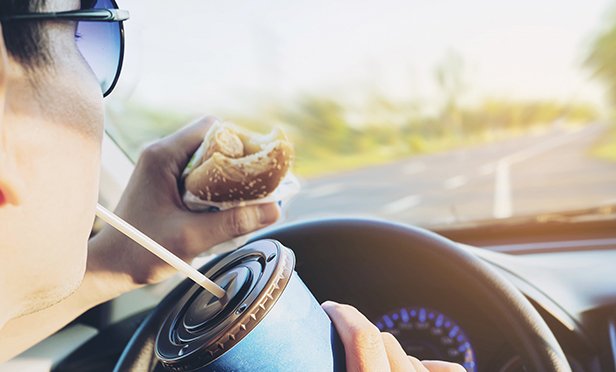 Distracted driving involves actions such as talking to passengers or on the phone, listening to music, daydreaming, eating or drinking. (Photo: Shutterstock)
Distracted driving involves actions such as talking to passengers or on the phone, listening to music, daydreaming, eating or drinking. (Photo: Shutterstock)
With more than six million auto accidents occurring annually, many claims managers already feel as if they have been run over by the number of resulting claims. As automobiles increasingly double as entertainment centers, telephone booths, restaurants and personal grooming boutiques, the demands placed upon claims managers have only increased.
Unless significant behavioral change occurs among motorists, auto claims will continue to shuttle into claims departments at a pace best described as intense.
|What is distracted driving?
When discussing distracted driving, talking on the telephone and texting quickly come to mind. However, anything that takes the driver's eyes or even mind off the road counts as distracted driving. This includes using a navigation system, listening to music, drinking a cup of coffee and even daydreaming.
Recommended For You
Want to continue reading?
Become a Free PropertyCasualty360 Digital Reader
Your access to unlimited PropertyCasualty360 content isn’t changing.
Once you are an ALM digital member, you’ll receive:
- Breaking insurance news and analysis, on-site and via our newsletters and custom alerts
- Weekly Insurance Speak podcast featuring exclusive interviews with industry leaders
- Educational webcasts, white papers, and ebooks from industry thought leaders
- Critical converage of the employee benefits and financial advisory markets on our other ALM sites, BenefitsPRO and ThinkAdvisor
Already have an account? Sign In Now
© 2025 ALM Global, LLC, All Rights Reserved. Request academic re-use from www.copyright.com. All other uses, submit a request to [email protected]. For more information visit Asset & Logo Licensing.








